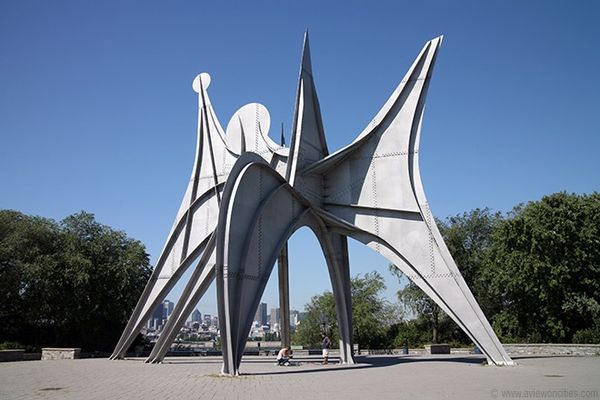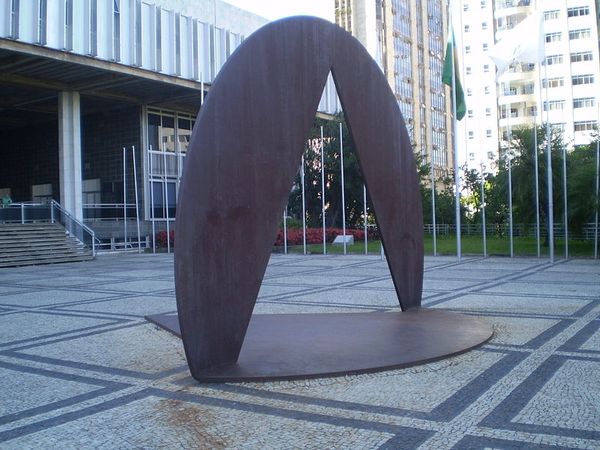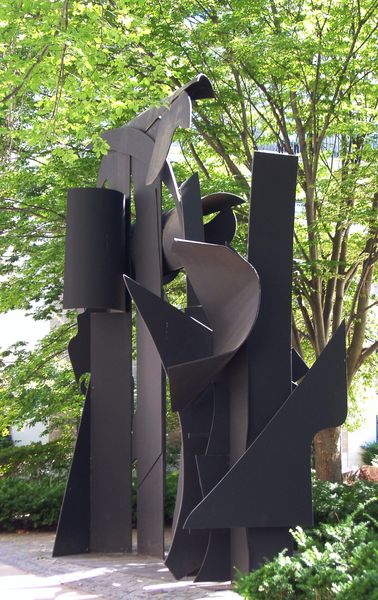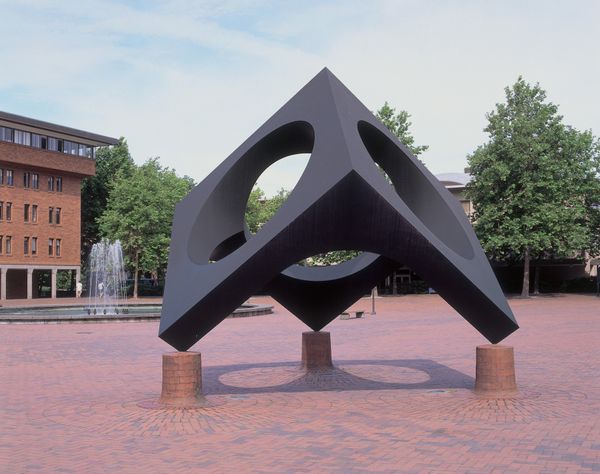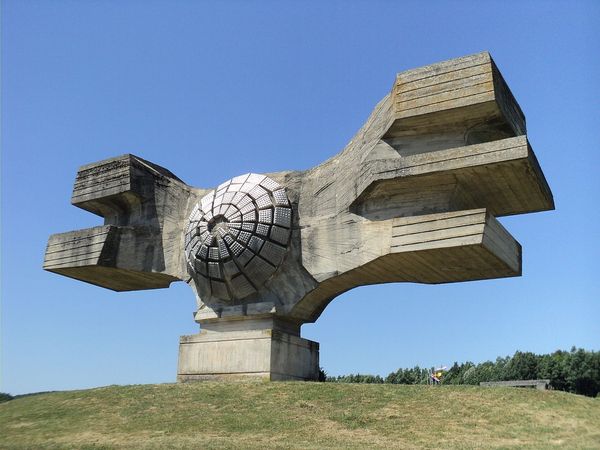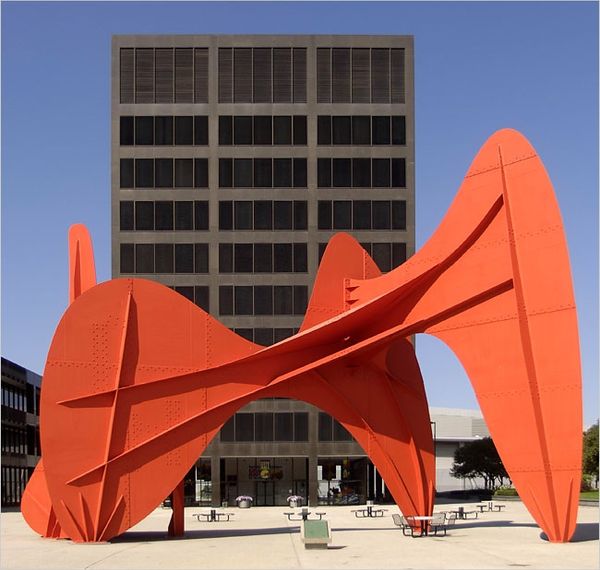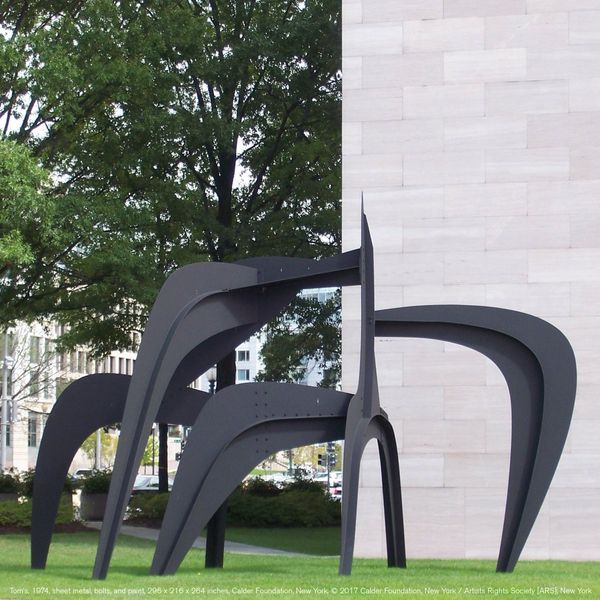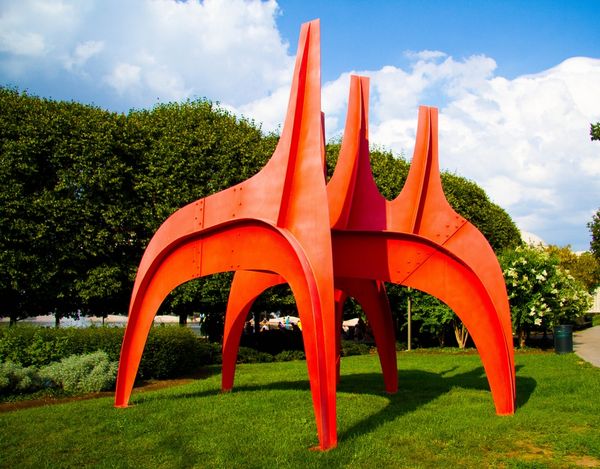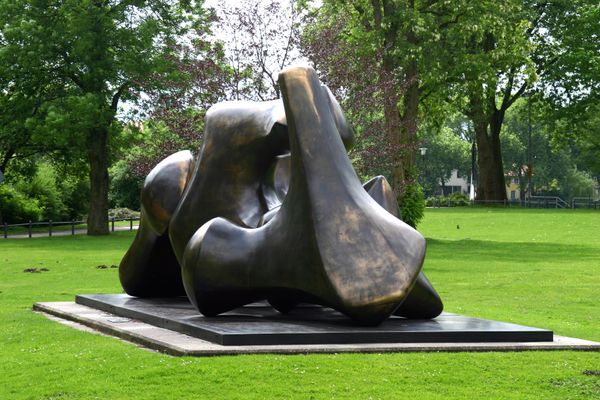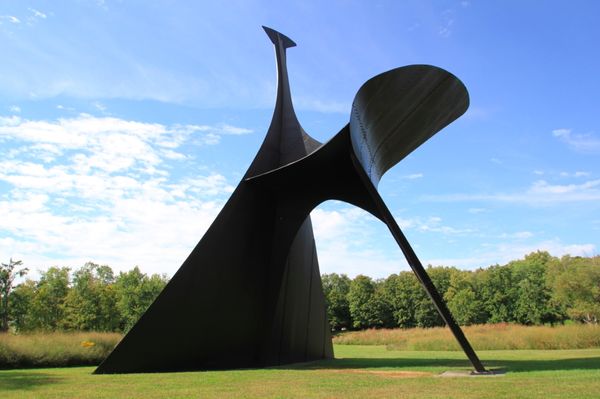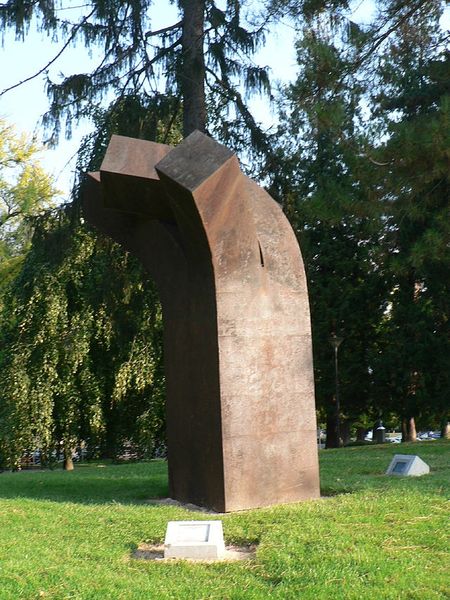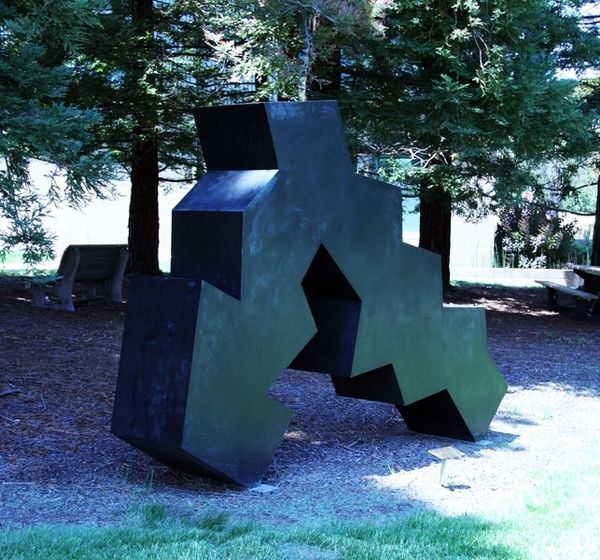
metal, public-art, sculpture, site-specific, installation-art
#
public art
#
urban landscape
#
metal
#
public-art
#
form
#
geometric
#
sculpture
#
site-specific
#
installation-art
#
line
#
modernism
Copyright: Alexander Calder,Fair Use
Editor: This is Alexander Calder’s “Teodelapio,” created in 1962. It's a metal sculpture, an imposing site-specific piece right in the middle of an urban landscape. What strikes me is the contrast; it's geometric yet somehow organic against the city backdrop. What do you make of this sculpture? Curator: Well, placing Calder's "Teodelapio" in the context of the early 1960s, it becomes fascinating to consider the socio-political climate and its reception. Abstract public art like this served as a bold statement during the Cold War era, often embraced by cities aiming to project an image of progress and modernity. How do you think the public might have initially responded to such a non-representational sculpture in their everyday environment? Editor: I imagine reactions were mixed. While some may have seen it as forward-thinking and optimistic, others might have found it alienating or disconnected from their lives. Did its placement have any specific significance within the city’s structure? Curator: Absolutely. The placement in a public space transformed the experience of art. It was no longer confined to a museum, becoming intrinsically linked to the everyday lives of people. Calder’s work, and its accessibility, was implicitly challenging traditional notions about who art is for and how it functions in society. Do you think it succeeds in this? Editor: I think it does! Being unavoidable in a traffic circle almost forces interaction and interpretation, sparking conversation around public art's purpose and the city’s identity. Curator: Precisely. And that constant dialogue is exactly what gives pieces like "Teodelapio" lasting relevance. It pushes the public to think about art as not just decoration but also a reflection, or even instigator, of civic life. I appreciate that it brought the dialogue in the society for many decades. Editor: This has been really helpful in understanding how artworks interact with the societies. I’m looking at public art in a completely new light now.
Comments
No comments
Be the first to comment and join the conversation on the ultimate creative platform.
